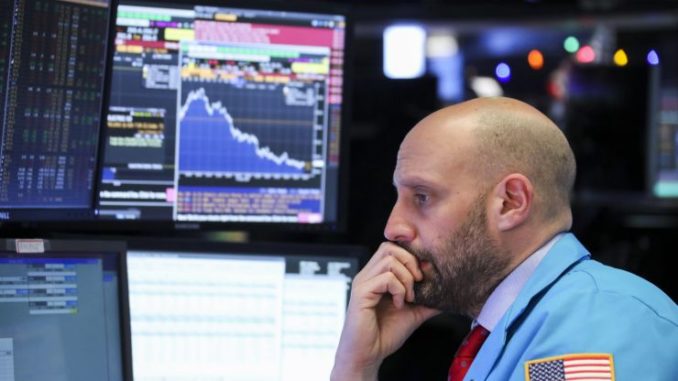
Debt market activity slowed to a comparative crawl to start out 2019. as a whipsaw stock market retreat led to a general freeze-up in multiple areas of corporate lending and borrowing.
Investors will be watching to see whether the steep across-the-board decline during the period was merely the remnants of 2018′s late-year turmoil, or another sign that the economy is slowing.
“It’s all a function of the fact the markets shut down basically in December. It was unusual because normally credit leads equities. This was one where equities led the massive deterioration in credit,” said Joseph LaVorgna, chief economist for the Americas at Natixis. “The spigot turned off.”
Indeed, the late-year meltdown and its carry-through to the market in the early part of the year was severe.
Issuance plummeted across the board, from syndicated loans to mergers and acquisitions to institutional lending. Securitized products such as collateralized loan obligations also saw a huge drop in activity as did leveraged buyouts, according to data compiled by Refinitiv.
First-quarter syndicated lending overall declined 36 percent to about $400 billion. Leveraged loans, a previously surging part of the market involving highly indebted companies with weak credit profiles, fell 56 percent to $152 billion. Institutional loans dropped to a three-year low of $58.8 billion, and investment grade and leveraged buyout funding slid 11 percent apiece.

LaVorgna said he expects that with much better conditions in the stock marketthis year, that should lead to a turnaround in the corporate debt market.
“As markets have healed here, you’re going to start seeing activity pick up,” he said.‘The economy is slowing’
Underwriters quoted by Ioana Barza, director of analysis at Thomson Reuters who compiled the Refinitiv report, spoke about market conditions.
One said, “The economy is slowing: that is the backdrop to all this and nobody has great visibility of how fast or how long. It is clearly a slower economy and there are different views on how much that is but there seems to be a lot of consensus around the trend.”
How much growth is slowing remains a matter of debate.

WATCH NOWVIDEO02:59Santelli Exchange: Corporate debt diet
Economists had been expecting GDP gains to be near zero for the first quarter, but that is no longer the consensus. The Atlanta Federal Reserve’s tracker was as low as 0.2 percent a few weeks ago but now is indicating a 2.1 percent growth rate. CNBC’s Rapid Update points to a 1.5 percent increase.
Christopher Whalen, head of Whalen Global Advisory, an investment bank consultancy, said the market is showing “a little pause now” that “takes weeks if not months to stabilize.” He advised looking at the fixed income market for more clues.
“The real question is if bond issuance slows. That tells you the economy is slowing,” he said.
Bond issuance across the board fell 14.5 percent through February, with declines particularly sharp in mortgage-related bonds (off 32.5 percent) and asset-backed securities (down 55.6 percent), according to Securities Industry and Financial Markets Association data. Total bond market debt outstanding closed 2018 just shy of $43 trillion, up 4.7 percent from the year before.
Investors in loans saw positive returns in the first quarter, though well below the stock market indexes, which saw their best open to a year since 1998 as the S&P 500 rose 13 percent. The Markit iBoxx Liquid High Yield Index gained 7.5 percent during the quarter, while the corresponding investment grade index moved higher by 6.2 percent.
BY CNBC NEWS
